The World Heritage City of Quedlinburg
- Written by Portal Editor
- Category: Saxony-Anhalt
- Hits: 168

The UNESCO World Heritage town of Quedlinburg lies on the northern edge of the Harz Mountains and was a famous royal palace in the Middle Ages.
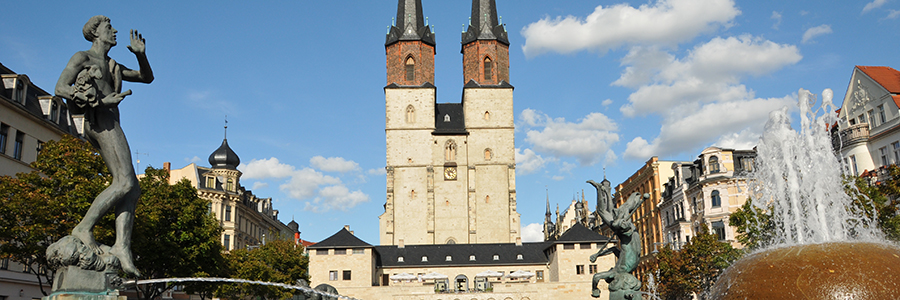 Travel to Saxony-Anhalt and immerse yourself in a fascinating mixture of history, culture and nature. This federal state in the heart of Germany has something to offer for every visitor. Start your journey in the state capital of Magdeburg, where you can marvel at the impressive millennium bridge over the Elbe.
Travel to Saxony-Anhalt and immerse yourself in a fascinating mixture of history, culture and nature. This federal state in the heart of Germany has something to offer for every visitor. Start your journey in the state capital of Magdeburg, where you can marvel at the impressive millennium bridge over the Elbe.
Stroll along the picturesque cathedral square and visit the imposing Magdeburg Cathedral, one of the most important Gothic buildings in Europe. From there your path continues to Halle (Saale), a city with a rich tradition and a vibrant art scene. Visit the famous Moritzburg Art Museum or stroll through the historic old town with its charming streets and half-timbered houses.
Saxony-Anhalt also has a lot to offer culturally: Lutherstadt Wittenberg is an absolute must for those interested in history. Here you can visit the Luther House, where Martin Luther lived and worked, and admire the Castle Church, on the door of which he nailed his 95 theses - an event of great importance for the Reformation. In addition to the cities, nature also attracts numerous visitors to Saxony-Anhalt: the Harz offers breathtaking landscapes for hiking or skiing, depending on the season. Climb the Brocken - the highest mountain in northern Germany - to enjoy a spectacular view of the entire area.

The UNESCO World Heritage town of Quedlinburg lies on the northern edge of the Harz Mountains and was a famous royal palace in the Middle Ages.

A very special experience takes place in Naumburg during Advent: "Christmassy in the courtyards", the title of which should perhaps be expanded to include the words "and in the wine cellars".
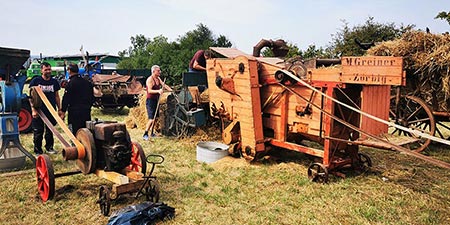
Aging agricultural machinery such as Schlüter, Deutz, Kramer, Porsche or Deering tractors from the 1950s and especially the legendary Lanz Bulldogs are still particularly attractive today when, for example, a threshing machine can be operated with them via a belt drive.
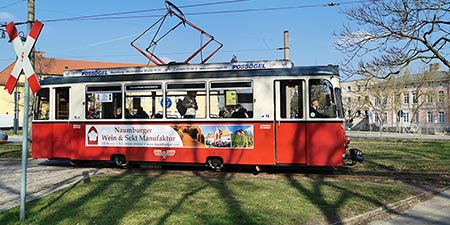
There are numerous reasons to plan a visit to Naumburg, because not only is there an impressive old town with numerous historical buildings such as the Naumburg Cathedral, the Nietzsche House, the Marientor as rare Barbakane and the town church of St. Wenceslas, we can also see the vineyards and tasting the exquisite wines made from it.
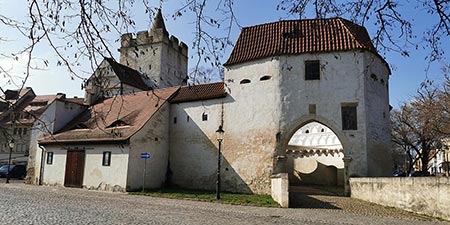
We were out and about in Naumburg again, first strolling through the historic old town and then along the Marienmauer to the Marientor, the only remaining city gate of Naumburg's city fortifications, which used to have five gates.
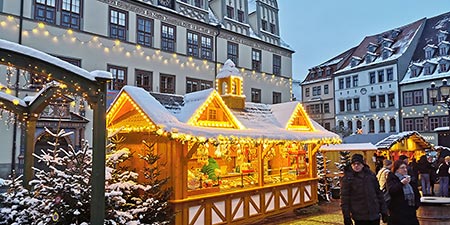
The romantically decorated old town of Naumburg, a small but nice Christmas market and the unique Naumburg nativity scene with its larger-than-life wooden figures (we have already written an article about this) are now hoping for numerous visitors again, because the cathedral city is particularly attractive during Advent.
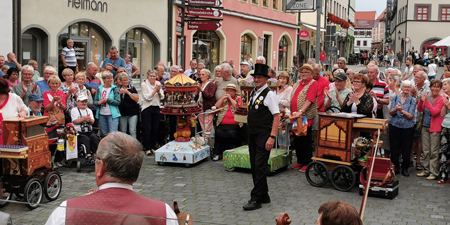
Who still knows them, the barrel organs, also known as barrel organs, which used to be pushed through many a city and then played in a busy location, much to the delight of many passers-by.
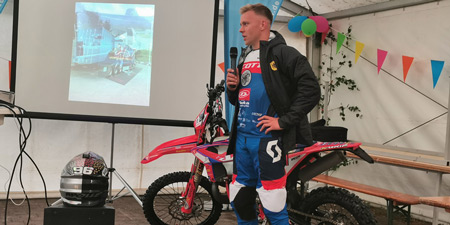
When we were looking for a workshop for motorcycles, we first came into contact with Tim, who referred us to his father Steffen, who has far more than just a knack for extraordinary motorcycles, especially for KTM, Ducati and others, what else still driving around.
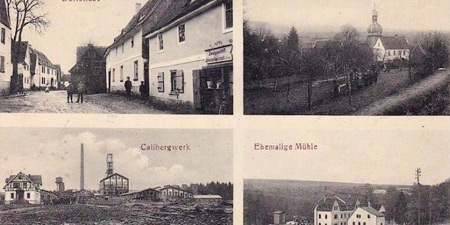
Billroda was first mentioned in a document on May 30, 1148 - at least there is the first mention of a place as "Bilrieht", which would correspond in the description to both the time and the area of Billroda.
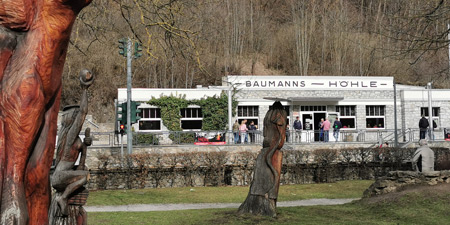
In addition to hiking and cycling trails, the Harz also offers a large number of stalactite caves that are worth visiting when the weather is not exactly inviting for hiking or cycling.
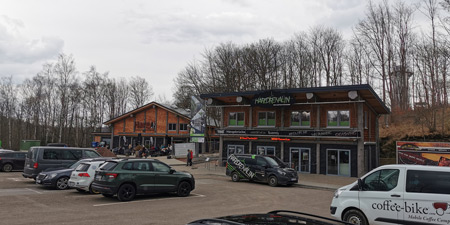
Of course, we had long since heard about the huge suspension bridge at the Rappbodetalsperre, and we were already familiar with the double rope slide almost parallel to the dam wall.
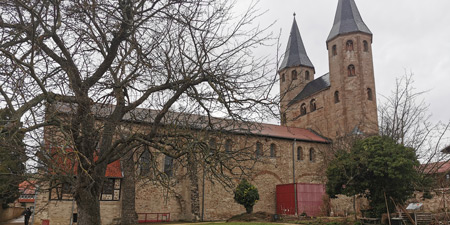
It was once again an intuitive stopover following a sign that brought us to the former Benedictine abbey, Kloster Drübeck, in the district of Drübeck near Ilsenburg on the northern edge of the Harz Mountains in Saxony-Anhalt.
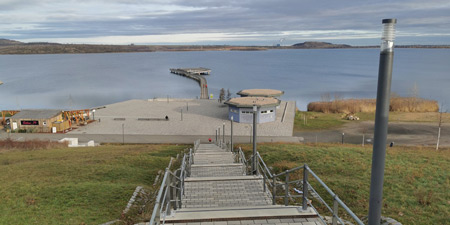
Three centuries of mining have had a lasting impact on the region between Braunsbedra, Müchel, Oechlitz and Merseburg. Coal mining created work for many generations until 1993 when the last coal train left the mine.
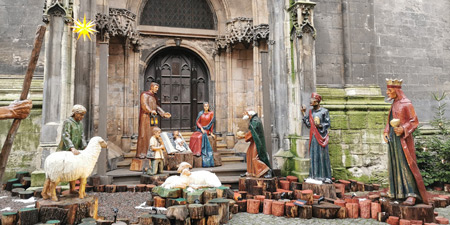
In a local Sunday news-paper we had read about local events in connection with the upcoming Christmas markets, including the larger-than-life nativity figures carved from solid wood in Naumburg.
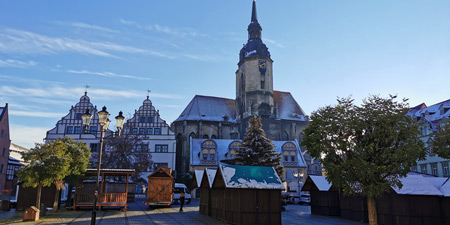
The symbol of the city of Naumburg and clearly visible from all sides is the late Romanesque-early Gothic cathedral of St. Peter and Paul in the episcopal suburb.
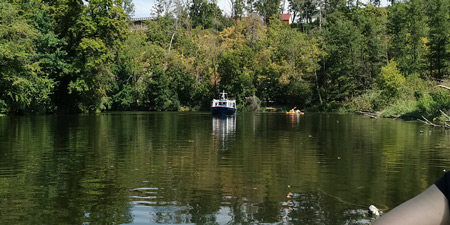
On our hikes along the Saale, we often noticed the paddlers, canoeists and boat tourists on the Saale, who particularly frequented the route from Saaleck Castle and the Rudelsburg near Bad Kösen to Freyburg, a type of leisure activity that we had wanted to do for a long time.

The small town of Memleben on the Unstrut gained great importance during the Ottonian period in the 10th and 11th centuries during the development of the East Franconian Empire into the German Empire.
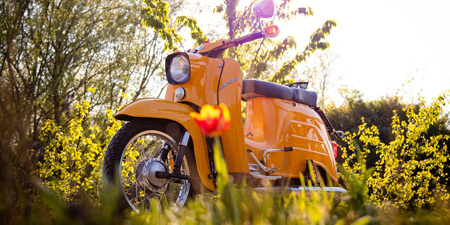
Sometimes it's the noises, disturbing but then so interesting and impressive that you inevitably look up in the direction of the "noise". This is what happened to us at the end of our bike tour from Memleben along the Unstrut back to Wiehe, where a small but fine ice cream café lured us.

Goseck Castle is a medieval castle and later monastery complex in Goseck in Saxony-Anhalt, near the imposing and oldest solar observatory in Europe.

The Midwives' Association of Saxony-Anhalt has had a forest planted near Goseck. Two beautifully designed commemorative plaques complete the small grove and convey the message of the midwives: